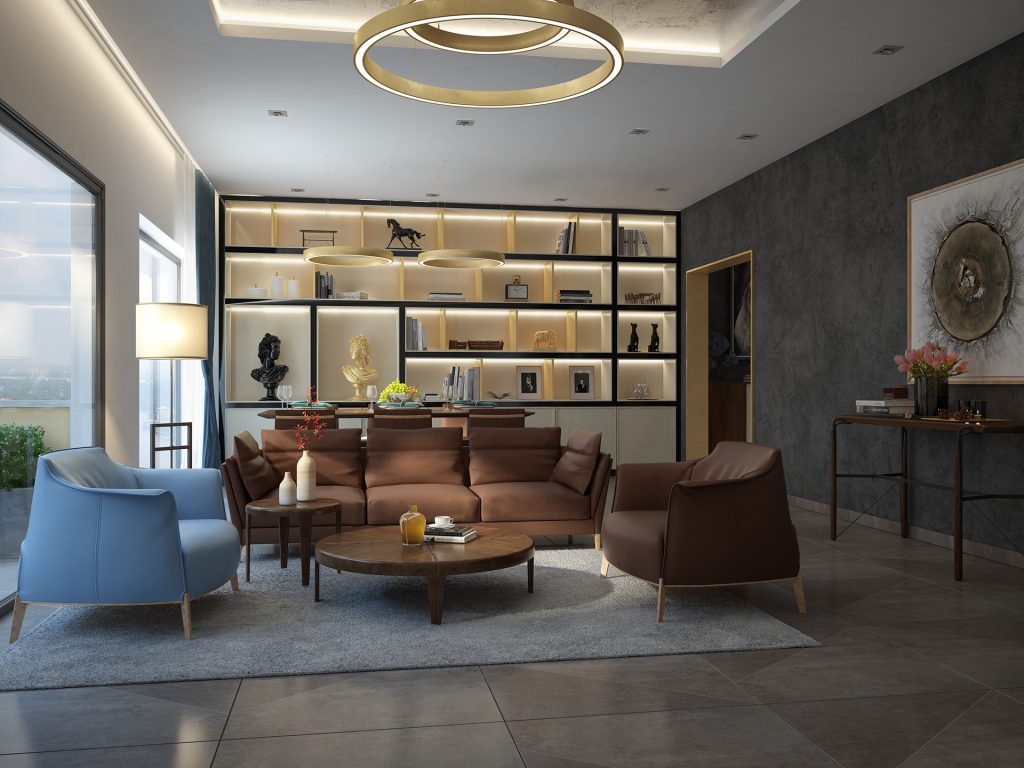
Room interior design is more than just aesthetics; it’s about creating spaces that reflect your personality and enhance your lifestyle. Imagine a cozy living room that perfectly complements your evening relaxation, a vibrant bedroom that inspires your creativity, or a functional kitchen that seamlessly integrates into your daily routine. However, achieving this dream often comes with challenges like limited space, budget constraints, and finding the perfect balance between style and functionality. This guide explores effective room interior design strategies to overcome these hurdles and create beautiful and practical spaces. We’ll delve into key facets such as planning, choosing the right color palettes, and optimizing lighting solutions. We’ll also present practical examples, statistics, and interior design trends. Get ready to elevate your interior design game!
Understanding the Fundamentals of Room Interior Design
Defining the Scope of Room Design
Room interior design encompasses the creative process of transforming a space into a functional and visually appealing environment. It involves considering the room’s purpose, the client’s preferences, and the overall aesthetic vision. This includes everything from furniture selection and color palettes to lighting arscopements and accessory placement. A well-executed room design maximizes space, enhances functionality, and creates a positive and engaging atmosphere.
determineing Key Considerations for Effective Design
Several critical facets influence the achievement of a room interior design project. First, understanding the room’s purpose is paramount. A living room might prioritize relaxation and social interaction, while a study demands a focused and productive environment. Next, consider the client’s lifestyle and preferences, ensuring the design seamlessly integrates with their daily activities and aesthetic tastes. Budget constraints also play a significant function. Understanding the financial limitations early on allows for realistic choices and prevents overspending. Effective communication between the designer and client is essential to ensure shared objectives and expectations.
Planning and Layout: The Foundation of Room Design
Creating a functional Layout
Effective room design begins with a thorough plan. A crucial step is determining the optimal room layout to ensure the placement of furniture maximizes space and facilitates seamless movement. Analyzing the dimensions and shape of the room is essential for creating an effective layout. Consider furniture sizes and the flow between varied zones within the room. If the room is small, consider multi-functional furniture pieces or foldable items. Strategically positioning furniture, such as sofas, beds, and dining tables, is key to creating a balanced and inviting atmosphere.
Choosing the Right Color Palettes and Materials
selecting Color Palettes that Enhance Mood
Color psychology plays a significant function in setting the mood and atmosphere of a room. Understanding how colors influence emotions is crucial. For example, warm colors like red and oscope can evoke feelings of energy and excitement, while cool colors like blue and green can promote calmness and relaxation. Consider the existing color scheme of the house and select colors that complement the overall design. Remember to consider the natural light that enters the space and select colors that amplify or neutralize it.
Lighting Design for Optimal Ambiance
Maximizing Natural Light and Artificial Sources
Lighting is another essential facet of room interior design. Natural light should be maximized whenever possible, as it significantly impacts the room’s ambiance and enhances the space’s overall feel. Strategic placement of windows and mirrors can maximize natural light penetration. Complement natural light with strategically placed artificial lighting sources such as ambient, task, and accent lighting. Consider using LED lights for energy efficiency, cost savings and a brighter environment. For example, consider using pendant lights or chandeliers in a dining area for a dramatic focal point.
Related Post : How To Start Interior Design
Furniture selection and Placement
Choosing Furniture that Meets functional and Aesthetic Needs
selecting the right furniture is crucial in interior design. Ensure that the furniture complements the overall style and function of the room. Consider the size, shape, and style of furniture pieces. Measure the space carefully before making any purchases. Prioritize functionality, and invest in versatile furniture that serves multiple purposes, particularly in smaller spaces. Consider the materials and finishes, ensuring they align with your aesthetic preferences. Furniture should enhance the space, create an aesthetic harmony, and fulfill the design purpose.
FAQ
Q: What are some key interior design trends for small rooms?
A: Key interior design trends for small rooms often emphasize maximizing space, creating visual illusions of spaciousness, and employing multi-functional furniture. Light colors, strategically placed mirrors, and incorporating open shelving are popular choices. The objective is to create a feeling of openness and airiness. This is achieved through thoughtful layout, intelligent lighting choices, and the selective use of colors and patterns. By strategically employing these techniques, you can turn a compact space into a stylish and inviting environment.
Q: How can I incorporate the latest room interior design trends into my home?
A: Staying abreast of current interior design trends can elevate your home decor. Exploring various online resources, interior design magazines, and attending design exhibitions can keep you informed of the latest trends. Consider incorporating these elements into your existing spaces. Trends include using warm and inviting color palettes, integrating natural materials into the design, and focusing on creating a cohesive and harmonious overall look. Ultimately, the objective is to seamlessly incorporate these trends into your unique style and preferences.
In conclusion, room interior design is a multifaceted process that requires careful consideration of aesthetics, functionality, and budget. By understanding these key elements and following the tips outlined in this article, you can create a space that is both beautiful and practical. For a personalized design consultation, contact a professional interior designer near you. They can help you visualize your dream room and guide you through the entire process. Don’t hesitate to explore more interior design ideas and resources online for inspiration.